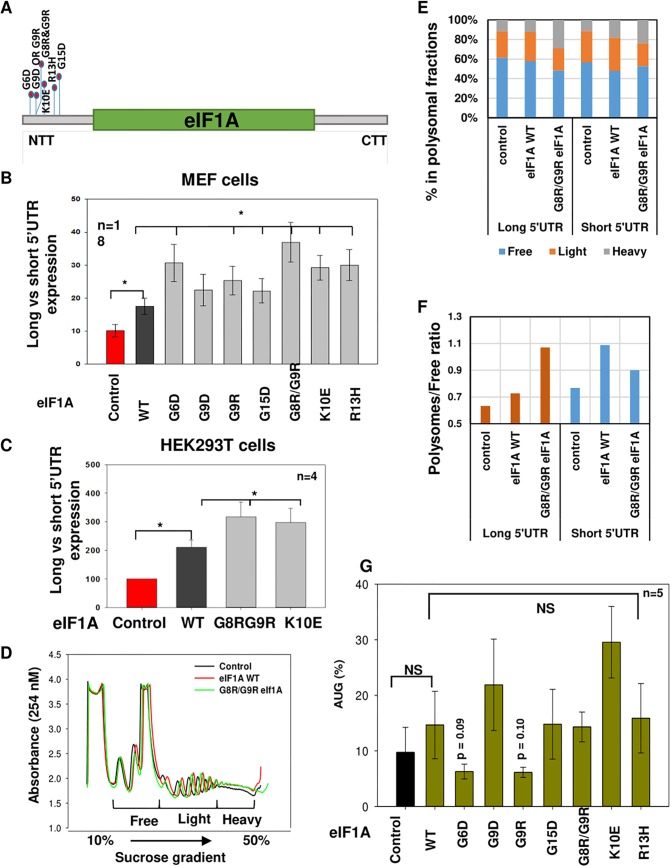FIG 7.
eIF1A NTT mutants primarily enhance the translation of long 5′ UTR mRNAs. (A) Schematic view of eIF1A showing the hot spot of NTT mutations reported in various carcinomas. (B) Several of the eIF1A cancer-associated mutations were introduced into an eIF1A expression plasmid. MEFs were transfected with the reporter genes described in Fig. 4C together with control or eIF1A WT and mutant expression plasmids. Cells were harvested 24 h after transfection and analyzed for Renilla and firefly luciferase activities. The graph presents the Renilla (long 5′ UTR) and firefly (short 5′ UTR) luciferase activity ratio of the indicated number of experiments (average ± standard error). *, statistically significant differences (P < 0.05). (C) The same experiment for which the results are presented in panel B was done with the indicated mutants in HEK293T cells. (D) HEK293T cells were transfected with control, WT eIF1A, and eIF1A G8R/G9R mutant plasmids together with the short and long 5′ UTR reporter plasmids that are described in Fig. 4C. At 48 h after transfection, cell lysates were subjected to sucrose gradient sedimentation and fraction collection to obtain the polysome profiles shown. (E) Real-time quantitative PCR analysis of the indicated long (Renilla) and short (firefly) luciferase reporter mRNAs in the free, light, and heavy polysomal fractions of the gradient of control, WT, and mutant eIF1A-expressing cells. (F) The change in the polysomal fraction-to-free fraction ratio of the long and short mRNAs upon eIF1A WT and mutant expression calculated from the data presented in panel E. (G) eIF1A NTT mutants have minor effects on translation through noncognate AUG. The bar graph shows the expression of CUG with respect to that of AUG upon expression of various eIF1A mutants in MEFs, as described in the legend to Fig. 5H. NS, not significant.

